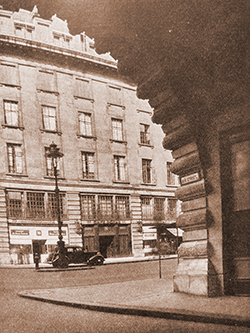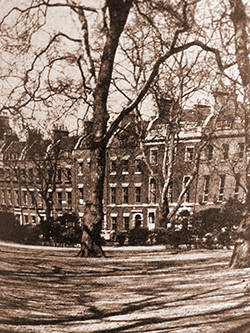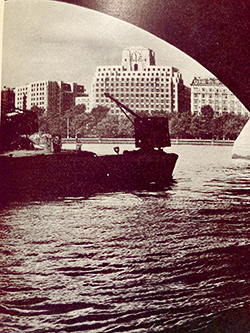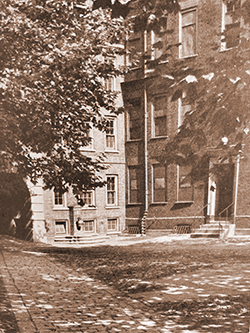Father Thames
Old Father Thames carries the sea right into the city and transforms the riverside with the romance associated with ships and seamen. Most important of the English rivers, flowing from its source in the Cotswolds down to the wide estuary, the Thames brings ocean-going vessels to the Pool of London. Larger ships can discharge their cargo as Blackwall in the East End, and the great liners penetrate as far as Ti bury.
at Gravesend the river is 800 yards wide, at Woolwich 490, and at London Bridge 290. Many fine bridges span it as it passes through the heart of the City, and innumerable sailor men still make a living along its bands.
The riverside has changed out of recognition during g the last century As Carlyle knew it, for example, it was very different. There is every likelihood that here will be even more drastic changes i in the next few decades. Much has been done to improve the north banks.
The riverside has changed out of recognition during g the last century As Carlyle knew it, for example, it was very different. There is every likelihood that here will be even more drastic changes i in the next few decades. Much has been done to improve the north banks.
Royal River: Cassell (1886)
London River: H.M. Tominson (1921)

The Cafe Royal
The Cafe Royal, haunt of writers and artists, celebrated in a thousand literary and artistic memoirs, is in Regent Street, Near Piccadilly Circus. It began as a small eating house, run by Daniel Nicholas Thevenon and his wife in 1j863, in Glass house Street. The French cooking and wines were of such quality that the restaurant become both renounced and profitable.
Wardour Street
Almost opposite the end of Gray's Inn Road, Holborn, the sixteenth century house of Staple Inn still overhang the pavement. Their timbered walls and gables confront the visitor with a genuine bit of Elizabethan England. Behind the most ancient part of Holborn. , a stone's throw from the noisy traffic. , is an oasis of peace and quiet. . Here it was that the Mr Gruberus of the mysteries of Edwin drone, dickens, last an unfinished novel, sat, riding by his fire. the Little Nook composed of two irregular. quad angles is much as the novelist saw it. One of those. nook's, the turning into which, out of the clashing street, imparts to the relief pedestrian, the sensation of having put cotton in his ears and velvet souls on his boots, where a few smoky sparrows twittered in smoky trees, as they call to one another, let us play at country. the Little Halloween. with a little lantern in its roof, has gone, and the visitor will look in vain for the mysterious quadrangle are Latin inscriptions and the dates 1734, 1757, and 1759.
The Mystery of Edwin Drood: Charles Dickens (1870)
The Dean's Elbow: A. E. W. Mason (1930)

Bedford Square
Famous men have lived here. The Earl of Oxford and Asquith, then the Rt Hon. H H. Asquith (1852-1928), the liberal statesman who was Prime Minister from 19O8 to 1916, for a time occupied No. 44. Two Lord Chancellor's used No. 6 and 6A as their official residence. One was Alexander Wedderburn Rosslyn, the first Earl of Loughborough, who changed his political coat so blatantly that the vitriolic 'Junius' said of him, when he deserted Lord North to become Solicitor-General, that 'there is something about him which even treachery cannot trust'. William Pitt elevated him to the Woolsack in 1792. The other was John Scott, Earl of Eldon 1751-1838, who was Lord Chancellor from 1801 to 1821.

